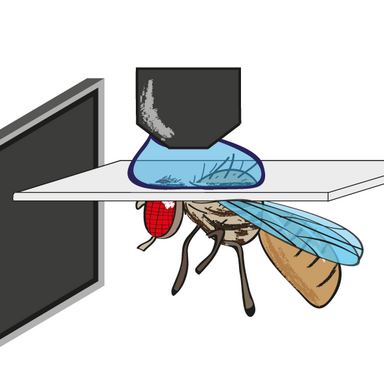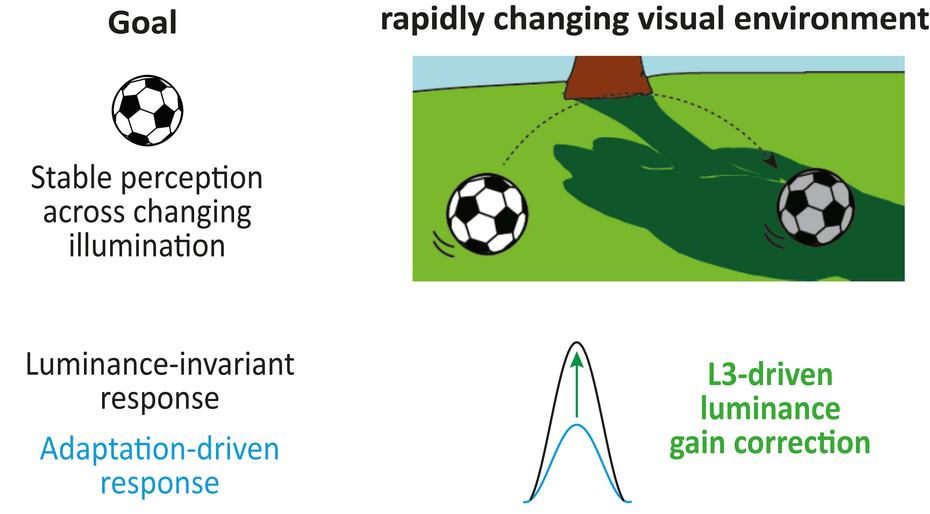Project A.08

- PhD student: Annika Bast
- Supervisor: Marion Silies
- Further TAC-members: Carlotta Martelli, Susanne Foitzik
- Research Group
Many animal species use visual stimuli to navigate their environment. However, rapidly changing visual input poses challenges to visual systems. Under fast changing light conditions, a luminance-dependent mechanism ensures stable, i.e. luminance-invariant, behavioral response in the fruit fly Drosophila melanogaster. My aim is to understand the mechanisms and evolution of this luminance invariance. Therefore, I combine intra- and interspecific behavioral comparisons with a molecular genetics and neural physiology approach.
Visual information guides behavior in many animals. To detect objects or motion, a common feature across different visual systems is the computation of contrast as a relative change in luminance. However, the visual environment is dynamic and varies across long and short timescales. While photoreceptor adaptation takes care of slow changes, rapid light changes challenge stable contrast computation. Here, incomplete adaptation would lead to a misinterpretation of the actual contrast and hence inappropriate behavioral responses. Nevertheless, animals show robust behavior even under fast changing light conditions. Specifically, they respond to same contrast cues with the same amplitude, independent of fast changing background illumination. Such luminance-invariant behavior is achieved by implementing luminance gain control in Drosophila melanogaster. Luminance information itself is preserved past photoreceptors in the lamina neuron L3, which is essential to implement this mechanism. It is not known, if and how this gain correction strategy is a general strategy of all visual animals. I propose that the visual-ecological niches of a species or a strain might affect the implementation of the luminance-based gain control mechanism.
In my project, I aim to understand how luminance invariance evolved and if its mechanistic properties are influenced by the visuo-ecological niche of a species. I will approach this question in the model organism D. melanogaster and other Drosophila species, as these provide an optimal system to study luminance invariance in a comparative approach. Behavioral analysis will reveal if luminance-invariant behavior is implemented across different Drosophila species or D. melanogaster wildtype strains. Relying on fully sequenced genomes, I will link differences in behavioral responses to underlying genetics using bioinformatics. Identified candidate genes can be analyzed by heterologous expression or manipulation in D. melanogaster or other species. Since it is unknown if L3 neurons provide luminance information to downstream circuits in the same way as in D. melanogaster across species, I will characterize temporal response properties of L3, or any neuron of interest involved in the underlying mechanisms in D. melanogaster, by in vivo calcium imaging in various species. Therefore, it is necessary to implement tools, that allow manipulation of gene-expression in different Drosophila species either in a cell type specific assay using the UAS/GAL4-System or by establishing a sparse labeling tool to drive effector expression in any subset of neuros.
